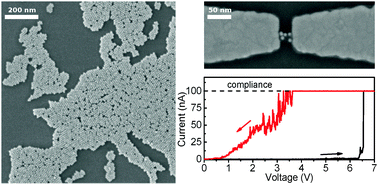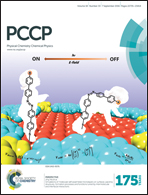Resistive switching of alkanethiolated nanoparticle monolayers patterned by electron-beam exposure†
Abstract
Carbon-based electronic devices are promising candidates for complementing silicon-based electronics in memory device applications. For example, sputtered thin films of amorphous carbon exhibit memristive behavior. The reported devices, however, have a minimal active area of about 50 nm diameter, leading to large set currents in the μA range. Although power efficiency would benefit from reduced drive currents, resistive switching of amorphous carbon confined to a few cubic nanometers has remained largely unexplored. Here, we investigate resistive switching in 30 nm long and 25 nm wide monolayer arrays of 10 nm gold nanoparticles patterned by direct electron-beam exposure followed by a purpose-designed emulsion-based development process. Electron-beam irradiation transforms the alkanethiol ligands of the gold nanoparticles into a solvent-resistant amorphous carbonaceous matrix allowing pattern development and imparting electronic function. We measure changes in conductivity of up to five orders of magnitude for set currents in the nA range.


 Please wait while we load your content...
Please wait while we load your content...